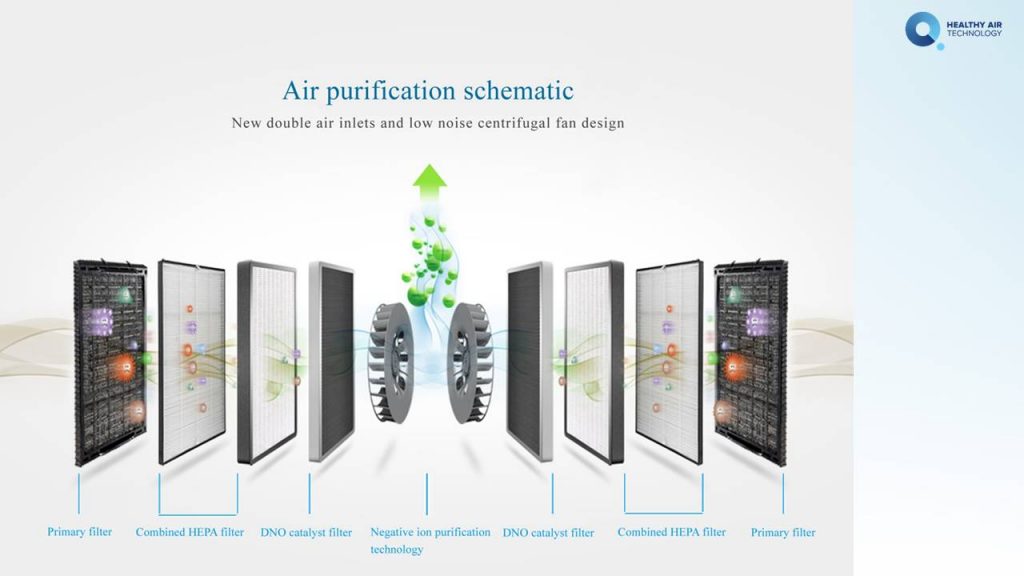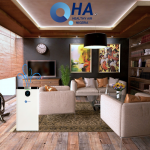Introduction
As we delve into our seasonal well-being series, let’s focus on the distinctive challenges brought by the Harmattan season. This post aims to provide a comprehensive understanding of how Harmattan affects indoor air quality and suggests advanced strategies to maintain clean, pure air in your living space.

Dry Air and Your Skin
Ever experienced the crispness of Harmattan’s dry air upon waking up? This subtle touch of moisture-lacking air can leave your skin feeling tight, dehydrated, and slightly flaky. Combat this by adding hydrating moisturizers and gentle cleansers to your skincare routine.
Dusty Winds and Indoor Spaces
Imagine Harmattan’s dusty winds infiltrating your indoor haven, settling everywhere, and challenging the tranquility of your space. Keep it hassle-free, invest in air purifiers with advanced tech to keep your indoors free from Harmattan’s dusty touch.
Respiratory Well-being and the Essence of Harmattan
For many, Harmattan is not just a visual spectacle; it’s a tactile experience felt in the air you breathe. The dryness might cause a slight throat itch or chest discomfort. It’s relatable and underscores the connection between Harmattan’s dry air and our respiratory well-being.
Understanding Harmattan’s Unique Characteristics
Harmattan is known for its dry air, dusty winds, and specific airborne particles that impact respiratory health. Understanding these features is like knowing the season’s playbook.
Harmattan’s Impact on Indoor Air Quality
As Harmattan spreads its dry and dusty air, the need to safeguard respiratory health becomes critical. Air pollution during this period can reach alarming levels, particularly affecting vulnerable populations like the elderly and young children. Harmattan’s unique composition, with heightened particulate matter, contributes to issues such as dry skin, eye irritation, and increased susceptibility to respiratory infections
Health Risks for the Vulnerable During Harmattan
- Respiratory Issues:
- Elevated levels of particulate matter during Harmattan can exacerbate existing respiratory conditions such as asthma, bronchitis, and other ailments.
- Cardiovascular Concerns:
- Harmattan’s air pollution is associated with an increased risk of cardiovascular diseases.
- Fine particulate matter can enter the bloodstream, impacting heart health, particularly in the elderly.
- Immune System Impact:
- Prolonged exposure to polluted air during Harmattan can weaken the immune system.
- This heightened vulnerability makes individuals, especially the elderly and young children, more susceptible to respiratory infections.
- Allergen Sensitivity:
- Harmattan air doesn’t just carry dust particles; it also contains allergens.
- This poses additional challenges for individuals with pre-existing allergies, particularly children.
Introducing the DNO Catalyst Air Purification System
In the battle against Harmattan’s impact on indoor air quality, meet the game-changer, our D-Orbital Nano Oxide (DNO) Catalyst Air Purification System. This cutting-edge technology takes air purification to the next level. It possesses unique properties that enhance air purification, going beyond filtration to actively neutralize airborne particles, allergens, and pollutants.

Beyond Just Purifying Air
D-Orbital Nano Oxide technology is not limited to purifying air. It excels in capturing and neutralizing airborne particles, ensuring a comprehensive purification process to safeguard respiratory health. Additionally, it eliminates unpleasant odors, contributing not only to health benefits but also enhancing overall indoor air quality, creating a more pleasant living environment
Optimizing Your DNO Catalyst Purification System for Harmattan
Ensure effective utilization of the DNO Catalyst purification system during Harmattan and beyond with these key steps:
- Acquisition: Invest in the DNO Catalyst system for advanced air purification. This cutting-edge technology is a game-changer in combating Harmattan’s impact on indoor air quality.
- Utilization: Follow recommended usage guidelines to ensure optimal performance. Understanding how to effectively incorporate the DNO Catalyst system into your indoor environment is key to maximizing its benefits.
- Optimization: Periodically clean and replace filters as needed to maintain effectiveness. Regular maintenance is a simple yet powerful way to enhance the efficiency of your purification system, keeping it in top-notch condition.
By taking these proactive steps, you not only optimize your DNO Catalyst system’s performance but also significantly contribute to combating air pollution and safeguarding yourself from Harmattan’s adverse effects
Conclusion
As we face the challenges of the Harmattan season, it’s clear that our well-being is at stake. From the dry air affecting our skin to the dust infiltrating our homes, Harmattan presents unique hurdles. Our respiratory health takes center stage, with risks like respiratory issues, cardiovascular concerns, and allergen sensitivity becoming more pronounced.
To combat these threats, we introduce the D-Orbital Nano Oxide (DNO) Catalyst Air Purification System, an innovative solution. This technology actively tackles airborne particles, allergens, and pollutants, providing a breath of fresh air. Say goodbye to Harmattan’s impact on indoor air and welcome the transformative benefits of the DNO Catalyst system. Breathe easy, live healthy, and create an indoor environment that truly supports your well-being.
Now that you’re armed with insights on combating Harmattan’s impact, take the next step to safeguard your indoor air quality. Explore the transformative benefits of the D-Orbital Nano Oxide (DNO) Catalyst Air Purification System. Click www.healthyairnigeria.com to discover more and embrace a healthier living space.
Guess what’s next? Series 3 is just around the corner! Stay tuned as we delve deeper into optimizing your indoor environment with our revolutionary DNO Catalyst system. Get ready for more expert tips, insights, and the latest in air purification technology. Don’t miss out, it’s a journey to a healthier, cleaner living space.


